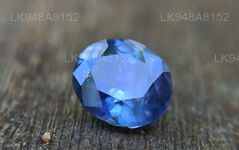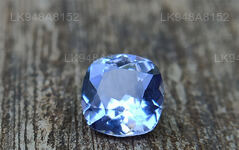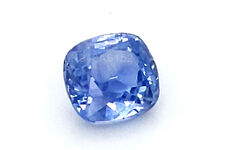
Gems
Sri Lanka’s gem industry has a very long and colorful history. Sri Lanka was affectionately known as Ratna-Dweepa which means Gem Island. The name is a reflection of its natural wealth. Marco Polo wrote that the island had the best sapphires, topazes, amethysts, and other gems in the world.
Ceylon Sapphires
The Ceylon Blue Sapphire is known for its beauty ? possessing the glorious cornflower blue shade ? as well as for being one of the few sapphires in the world that can be sold as a completely natural stone without heat treatment. The blues aside, Ceylon sapphires also come in beautiful hues including pink, yellow, orange, green, purple, lavender and of course, the inimitable padparadscha sapphire ? named after the lotus flower. All these highly marketable qualities of Ceylon sapphire has created brand recognition world wide – a brand not created by the producers of the stone, but by the sellers and consumers.
- Sources: The most famous sources for sapphire are Kashmir and Burma, (now known as Myanmar). Kashmir sapphire, which was discovered in 1881 when a landslide in the Himalayas uncovered beautiful blue pebbles, has a rich velvety colour prized by connoisseurs. Burma sapphires, from the same region that produces fabulous rubies, are also very fine. However, today, these two sources account for a very small quantity of the sapphire on the market. Most fine sapphire on the market today comes from Sri Lanka, which produces a wide range of beautiful blues from delicate sky blue colours to rich saturated hues. Kanchanaburi in Thailand and Pailin in Cambodia are renowned for deep blue, even colours. Two relatively new mining localities are showing promise: Madagascar, which has produced some exceptionally fine stones in small sizes but has no organized mining yet, and Tanzania, which has long produced sapphire in other colours but is starting to produce blue colours as well from a new deposit in the south.
- Precautions: Sapphires are most often cut in a cushion shape – a rounded rectangle – or an oval shape. You can also find smaller sapphires in round brilliant cuts or a wide variety of fancy shapes, including triangles, squares, emerald cuts, marquises, pear shapes, baguette shapes, cabochon cuts and smooth domes.
- Choosing a Sapphire: Sapphires that show a star-like light effect are called star sapphires; the most famous star sapphire from Sri Lanka is displayed in the Museum of Natural History in New York. Star sapphires or star rubies display a star-like marking and this effect, commonly known as asterism, occurs when light falls on the cut stone, cut in the cabochon form, and three rays appear giving a six-point star. However, stones with six rays have also been known to occur. Lastly, there is milky corundum, a white opaque form of corundum also called geuda, which for many years was regarded as useless and discarded, often ending up lining fish tanks in some gemstone merchant’s house. This happened until dealers in Thailand learned to heat-treat geudas to change the colour of the stone from an unattractive cloudy grey-white to a bright, sparkling blue. They completed the work nature began and ended up with a blue sapphire – of much greater value than a useless pebble. The colour of heat-treated blue sapphires are stable and the chemical composition of the stone is that of a sapphire, although prices are lower than for a similar quality stone with natural colour.
Explore Gem Mines
-
Explore Gem Mines in Ratnapura from Negombo
정가 ₩128,000 KRW에서정가단가 / 단위 -
Explore Gem Mines in Ratnapura from Colombo
정가 ₩179,000 KRW에서정가단가 / 단위₩193,000 KRW할인가 ₩179,000 KRW에서할인 -
Explore Gem Mines in Rathnapura from Kalutara
정가 ₩222,000 KRW에서정가단가 / 단위₩277,000 KRW할인가 ₩222,000 KRW에서할인 -
라비니아 산에서 라트나푸라의 보석 광산을 탐험하세요
정가 ₩259,000 KRW에서정가단가 / 단위₩323,000 KRW할인가 ₩259,000 KRW에서할인






























